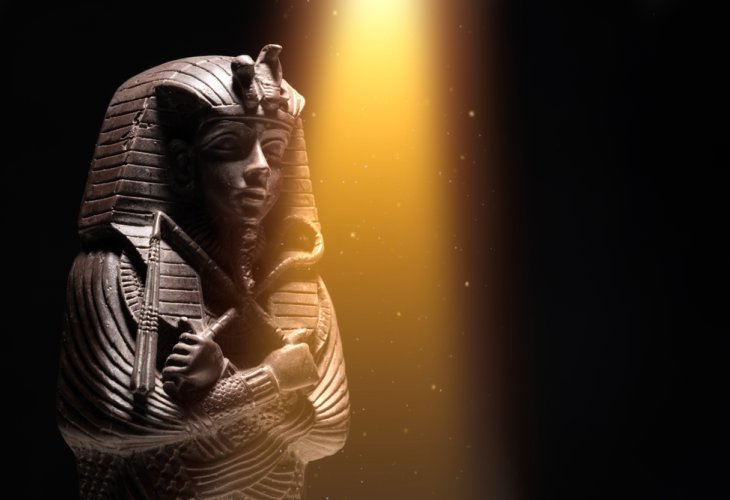The Mysteries of Pharaoh: Unraveling Ancient Medical Tales
Was Pharaoh really a little man with a big heart issue? While we haven't uncovered Pharaoh's entire medical history, we're certainly intrigued by his legendary stature.
 (Photo: shutterstock)
(Photo: shutterstock)The exploration of ancient Egyptian culture, known as Egyptology, is a fascinating yet elusive field. Ancient Egypt is steeped in mystery and intrigue, inspiring countless books and films that delve into this imaginative domain.
However, our current interest lies in Pharaoh, the one who reluctantly let the Israelites leave Egypt. Can we identify him? What do we know about him?
The Sages described him as "low of men," stating he was an 'amah' (a measure of length) tall, with a beard of the same measure, reminiscent of the wicked dwarfs in fairy tales... Could this be a criterion to help us find him?
Well, it's not straightforward. According to the Maharal of Prague in his book "Be'er HaGolah," Pharaoh wasn't actually the size of an 'amah,' roughly 50 centimeters. This description aimed to portray his character as small, with the long beard symbolizing his oversized ego... The beard might be impressive, but in this case, this seemingly impressive accessory, the beard, is larger than the body. It's ridiculous, depicting a man whose ego was larger than his reality.
Other commentators suggest that Pharaoh was indeed very short, but the description of an 'amah' is not literal, but rather a moniker for a short person, a "dwarf." The word 'gomed' equals 'amah,' in Aramaic. In short, he was short, a dwarf, but not necessarily exactly 50 centimeters tall.
Fortunately, the bodies of most famous Egyptian kings from that era remain mummified within their tombs, allowing us to examine the height of the dead pharaohs... One identification for the Pharaoh of the Exodus is King Ramesses II. However, the mummy of Ramesses II reveals that he stood at a height of 1.73 meters, considered much taller than other pharaohs. Leibel Resnick, in his book "The Bible from the Ground" (Chapter 21), surveys the pharaohs' bodies and proposes Amenhotep IV as a worthy candidate. Researchers hypothesize that he suffered from Froehlich syndrome, an endocrine disorder causing disproportionate body parts and even dwarfism. His statues also indicate a bizarre and unusual body structure.
Of course, this discussion is merely speculative, and it's challenging to truly date events in Egyptian history. However, the story takes a twist. As recounted by one of the supervisors of our generation (as mentioned in the "Darcheinu" anthology): "One day, a young man came to him, lamenting his fate, as recently atheistic thoughts began to arise in his mind... The spiritual advisor took the young man to the sacred home of the esteemed Rabbi Aharon Yehuda Leib Steinman, asking Rabbi Steinman to help this precious young man... Upon hearing his words, Rabbi Steinman told him, 'It is written in the Midrash about the verse "Pharaoh's heart was hardened": "Just as the liver gets angry, so too, Pharaoh's heart was hardened." Rabbi Steinman added: 'When I was in Switzerland in 1939, I met an expert from the London Museum, who was researching the Pharaoh from the time of the Exodus, and he discovered that Pharaoh's heart consisted of liver tissue, much to his amazement. I told him about the aforementioned Midrash'" (these words also appear in Rabbi Steinman's book, "Ayelet HaShahar" on the Torah).
After leaving Rabbi Steinman's home, the advisor saw the young man sobbing with tears in his eyes. When asked why he was crying, the young man gave a surprising answer: "Know that my downfall began when I learned the Midrash that Pharaoh's heart was hardened, and I couldn't believe that such a thing existed in reality, and from then on I became a complete atheist concerning faith and the Torah given at Sinai. How astonishing it is that it was this Midrash that Rabbi Steinman proved to me the Torah's truth..."
So, who was the Pharaoh mentioned by the expert from the London Museum?
Most likely, it was Seti the First (the father of the taller Ramesses II...), who also lived around the alleged time of the Exodus. The interesting finding about his heart was that in the mummified body, on the left side, instead of the heart, there was a liver. The heart was placed on the right. Some researchers speculated that Pharaoh suffered from a rare heart disease, and the heart's displacement during mummification was considered a form of posthumous correction. What is clear is that indeed with Seti the First, there was a medical mess in the heart area.
Unfortunately, we have not yet found Pharaoh's complete medical file, but at least we have traced some of his legendary tales...

